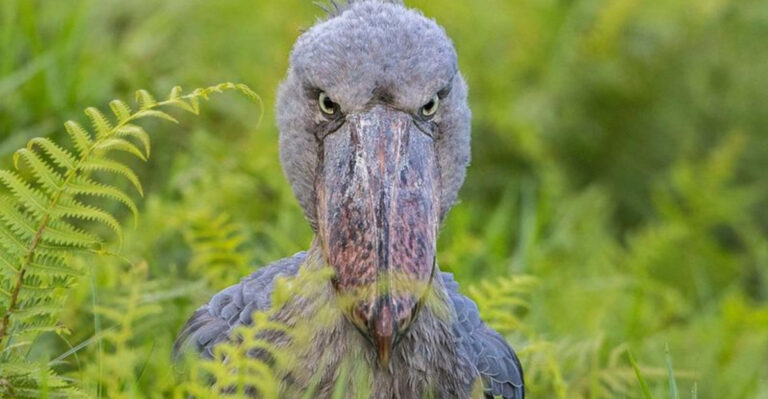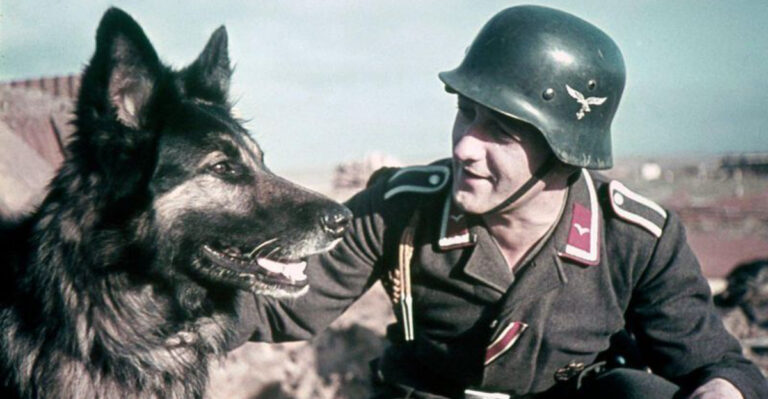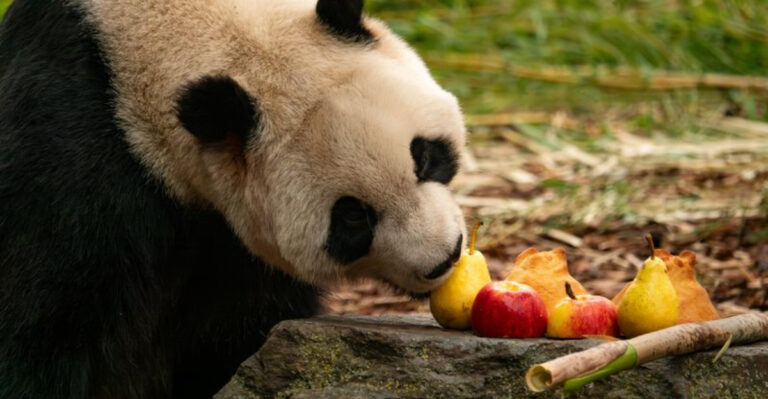17 Big Cats Known For Their Incredible Fur Patterns

The wild world of big cats offers some of nature’s most spectacular artwork – their fur patterns.
From the iconic spots of leopards to the striking stripes of tigers, these markings aren’t just beautiful; they’re survival tools that help these magnificent predators blend into their environments while hunting or hiding. Let’s explore 17 amazing big cats whose coats showcase nature’s most impressive designs.
1. Bengal Tiger
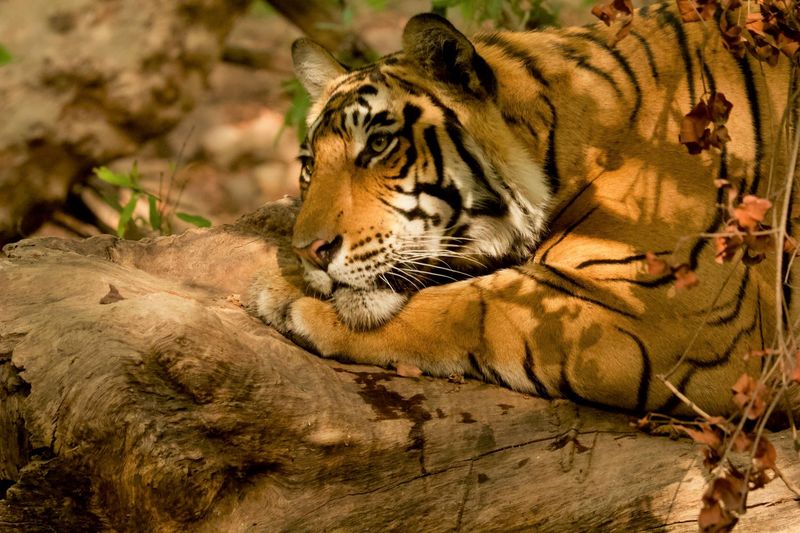
Orange flames lick across a midnight canvas – that’s what a Bengal tiger’s coat resembles in the dappled jungle light. Each tiger sports a unique pattern of black stripes, like a living fingerprint no other cat shares.
These iconic markings provide perfect camouflage in tall grasses and bamboo forests, helping these 500-pound predators disappear despite their massive size.
2. Amur Leopard

Scattered across a snowy mountainside, only 100 of these critically endangered beauties remain in the wild. Their luxurious coats feature widely-spaced rosettes on cream-colored winter fur that grows exceptionally long and thick.
Unlike other leopards, Amur leopards’ spots are more widely spaced and ringed with thicker black borders, creating a stunning contrast against their pale background.
3. Clouded Leopard
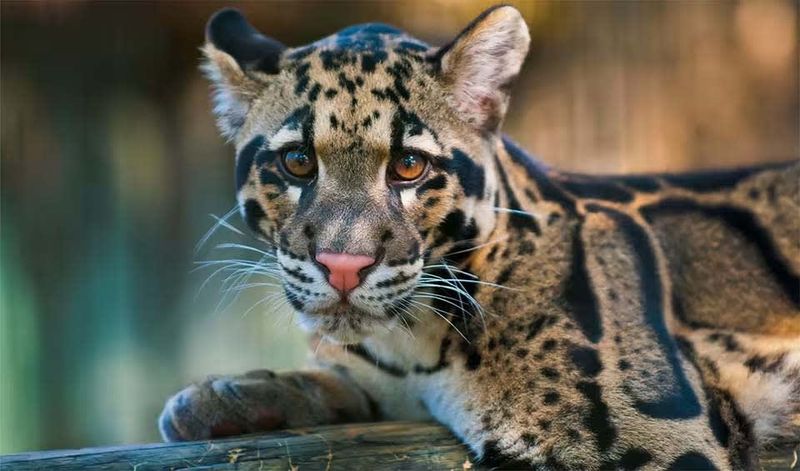
Fantasy artists couldn’t dream up a more magical pattern than what adorns these medium-sized cats. Their coats showcase cloud-shaped blotches with dark edges surrounding lighter centers, creating an illusion of depth.
No two clouded leopards wear the same design, and their unusual markings extend from their bodies to their exceptionally long tails, which help them balance during tree-climbing adventures.
4. Snow Leopard
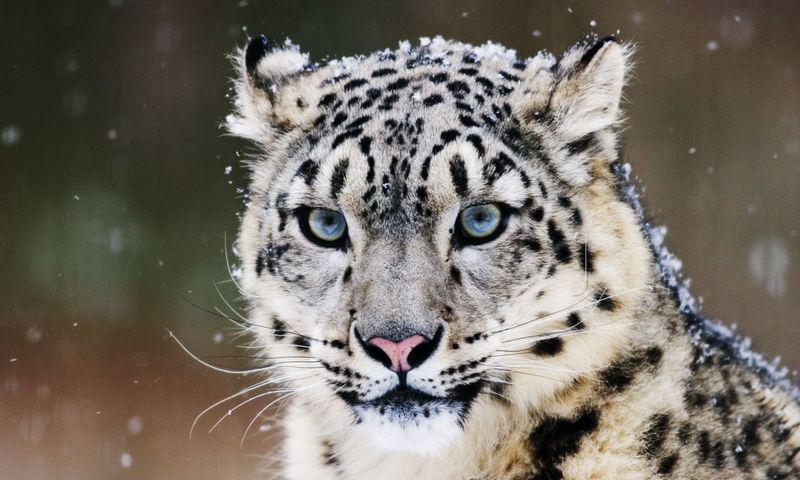
Ghosts of the mountains, these elusive cats wear nature’s perfect winter camouflage. Their smoky gray coats feature open black rosettes that seem to dissolve into the rocky, snow-dusted landscapes of Central Asia’s highest peaks.
The fur grows incredibly thick – up to five inches on their bellies – creating a plush, almost otherworldly appearance that helps them survive in temperatures dropping to -40°F.
5. Jaguar
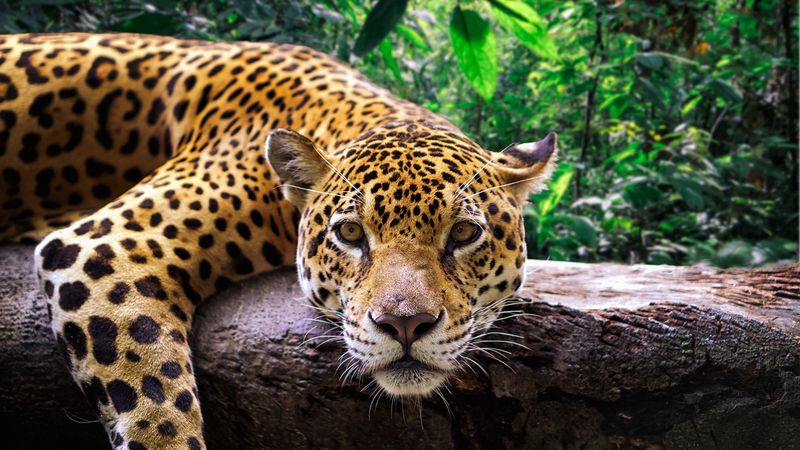
Look closely at a jaguar’s coat and you’ll spot something unique – each rosette contains smaller spots inside! This distinctive pattern sets jaguars apart from leopards and creates an almost three-dimensional effect on their golden-yellow to reddish-brown fur.
Some jaguars even display melanism, appearing almost entirely black with shadow-like rosettes visible only in certain light – the famous “black panther” variation.
6. Ocelot
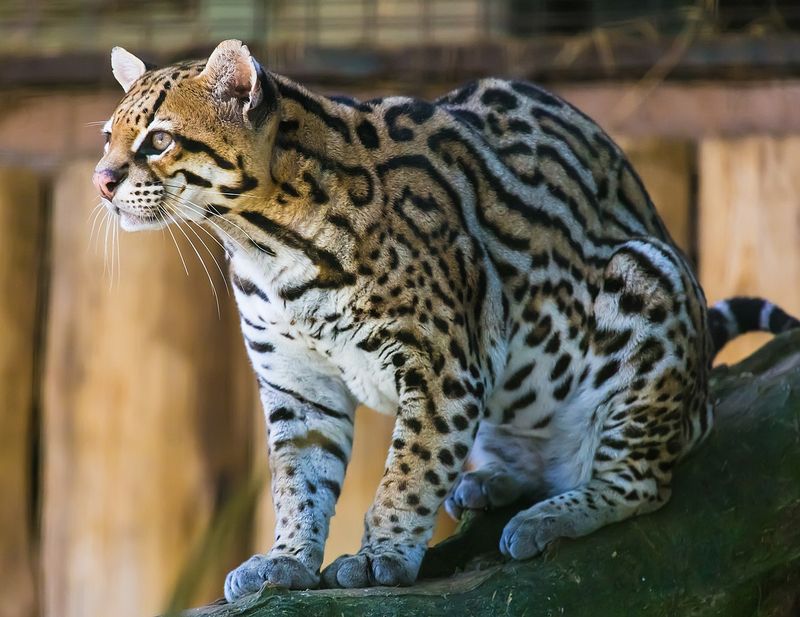
Draped in what looks like abstract art, these medium-sized wildcats sport elongated spots that stretch and connect into chain-like patterns. Their cream to tawny background fur makes the bold black markings pop dramatically.
Salvador Dalí kept an ocelot as a pet, perhaps inspired by its surrealist-worthy coat. Each ocelot’s pattern is so distinctive that researchers use them like fingerprints to identify individuals in the wild.
7. Marbled Cat

Swirling like oil on water, the marbled cat’s coat features large, irregular blotches with dark edges that create a marbled effect unlike any other feline. Despite being only the size of a house cat, this rare Southeast Asian forest-dweller looks like a miniature clouded leopard.
Their bushy tails, almost as long as their bodies, display bold rings that complement their extraordinary marbled pattern.
8. Serval
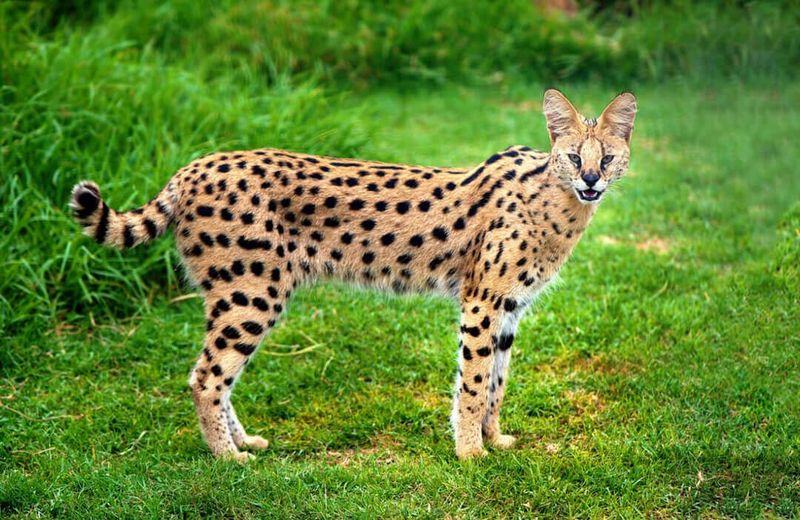
Polka dots meet modern art on the serval’s sleek golden coat. Small, solid black spots scatter across their bodies, occasionally merging into parallel lines along their long necks and backs.
Standing on the tallest legs of any cat relative to body size, servals use their spotted pattern to vanish into African grasslands. Their distinctive black tear marks run from eyes to mouth, adding to their unmistakable appearance.
9. Margay

Moonlight dappling through rainforest leaves – that’s what a margay’s coat resembles. These small, tree-dwelling cats sport large, dark-edged rosettes and spots that sometimes merge into bands and stripes, particularly on their neck.
Masters of the canopy, margays can rotate their ankles 180 degrees to climb down trees headfirst. Their beautiful pattern provides perfect camouflage among the shifting shadows and light of their Central and South American forest homes.
10. King Cheetah
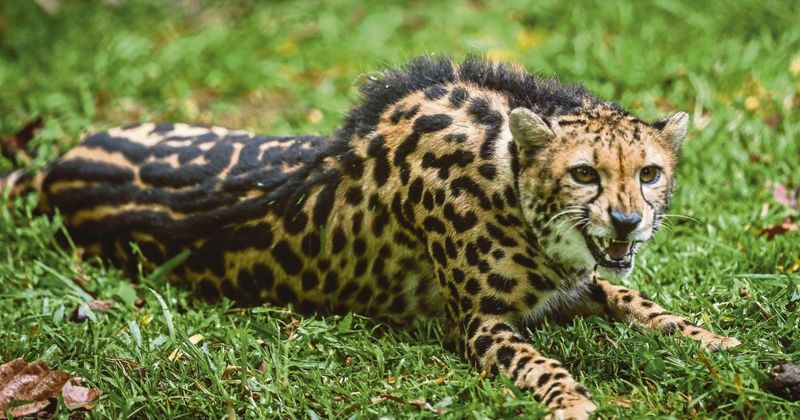
Genetic royalty among spotted cats, the King Cheetah isn’t a separate species but a rare mutation where spots fuse into dramatic black stripes running down the back. Only a handful have ever been documented in the wild.
First discovered in 1926, these striking cats were initially thought to be hybrids or a new species. Their unique pattern results from a recessive gene that affects both parents, making their sighting incredibly rare.
11. Asiatic Golden Cat
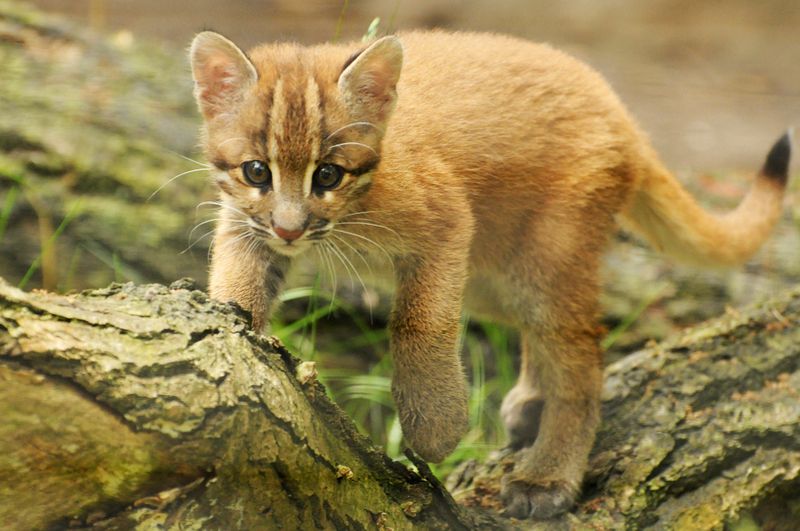
Color-changing masters of disguise, these medium-sized wildcats come in an astonishing variety of coat colors – from golden-red to dark brown, gray, and even melanistic black forms. Some sport beautiful spotted or striped patterns, while others wear solid colors.
Native to Southeast Asian forests, they’re sometimes called “fire cats” due to their fiery red coat variation. This remarkable color diversity helps them adapt to different forest habitats across their range.
12. Fishing Cat
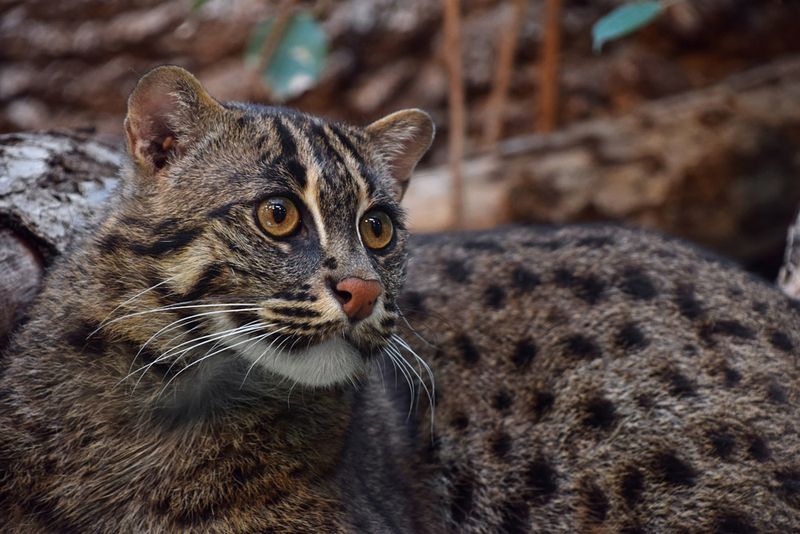
Raindrop spots splash across the olive-gray coat of these unusual semi-aquatic cats. Their fur pattern features solid dark spots arranged in horizontal rows, creating an almost organized appearance unlike the random spots of many other cats.
Perfectly adapted for their wetland lifestyle, fishing cats have water-resistant fur with a dense woolly undercoat. Their unique pattern helps them blend into the reedy, dappled environments of Asian marshlands while hunting fish.
13. Geoffroy’s Cat
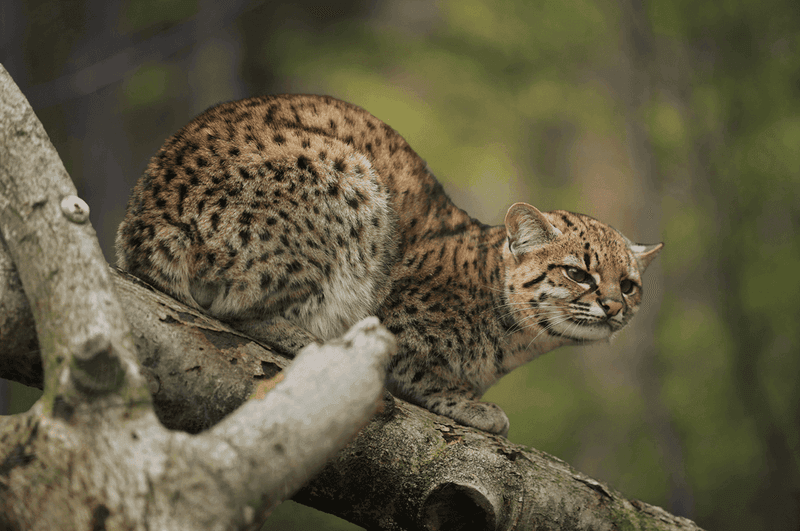
Sprinkled with black confetti, these small South American cats wear coats covered in tiny black spots that sometimes form larger rosettes or lines. Their background color shifts seasonally – silvery-gray in winter and more rusty-brown in summer.
Despite being only the size of domestic cats, Geoffroy’s cats were once heavily hunted for their beautiful fur. Their spots become elongated near their shoulders and flanks, creating a flowing, elegant pattern.
14. Oncilla

Miniature leopards roaming the cloud forests, oncillas weigh just 3-4 pounds but wear coats as elaborate as their larger cousins. Their pattern features small, dark-bordered rosettes and spots against a pale yellow to light brown background.
These tiny predators have two distinct populations – one in Central America and another in South America – with slightly different patterns. Their rosettes often stretch into horizontal streaks along their sides, creating a flowing appearance.
15. Pampas Cat
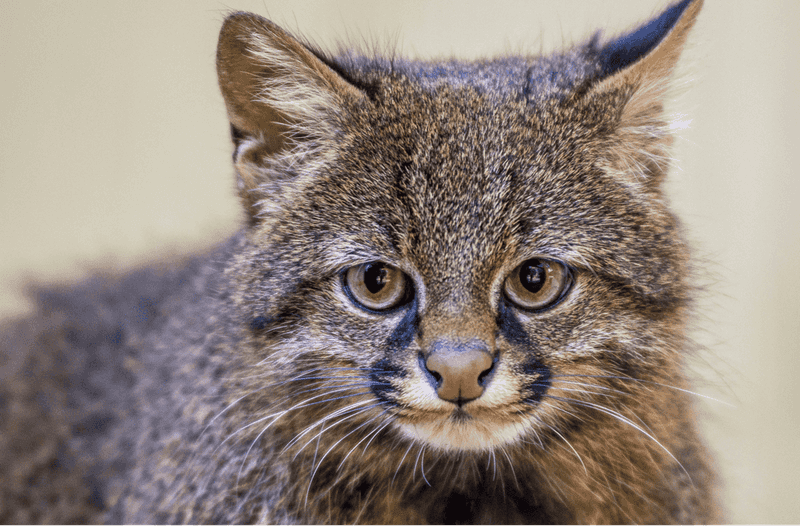
Fashion-forward felines of the grasslands, pampas cats rock vertical stripes that transition to horizontal bands and spots in different regions. Their appearance varies dramatically across their range, with some populations sporting bold patterns and others wearing more subtle markings.
Native to South America, these adaptable cats can be found from the Andes mountains to lowland grasslands. Their variable coat patterns perfectly match their diverse habitats – striped in grassy areas and more spotted in rocky regions.
16. Rusty-Spotted Cat
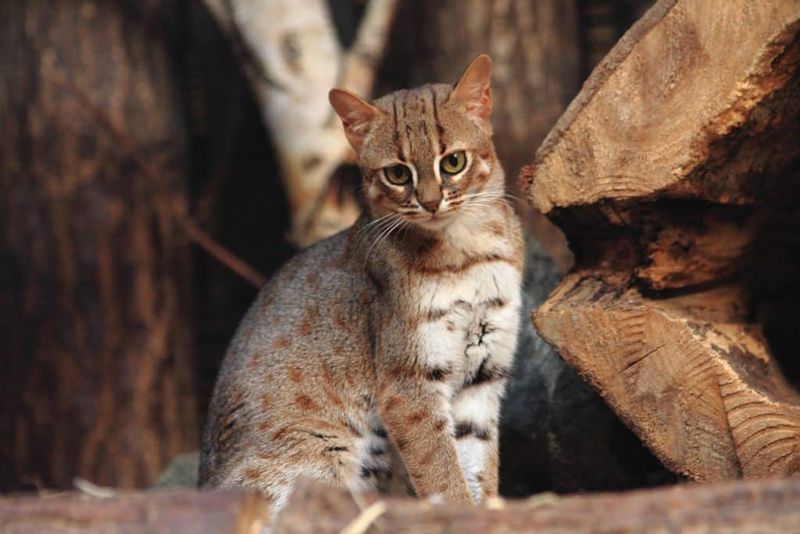
Half the size of a house cat but wearing twice the attitude, these tiny predators are among the world’s smallest wildcats. Their rusty-gray coats feature rows of rust-colored spots that sometimes blur into lines across their backs.
Native to India and Sri Lanka, rusty-spotted cats have distinctive white spots above their eyes that look like eyebrows, giving them a perpetually curious expression. Their diminutive size and beautiful pattern make them as adorable as they are rare.
17. African Golden Cat
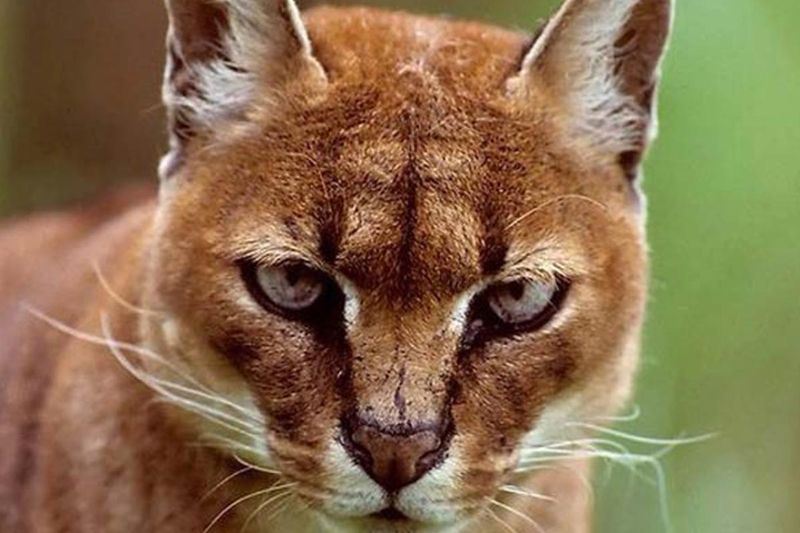
Chameleons of the cat world, these secretive forest-dwellers come in various colors from golden-red to slate gray. Some sport beautiful spotted patterns while others wear solid colors with minimal markings.
Living in the dense forests of Central and West Africa, they remain one of the least-studied wild cats. Their variable appearance helps them adapt to different forest habitats – from darker forest floors to sunlit clearings.


